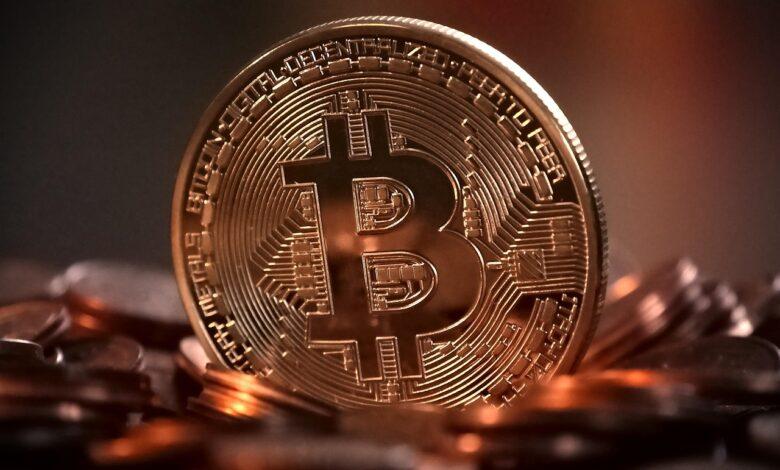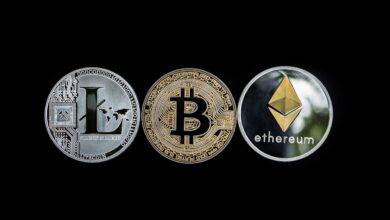Unveiling DeFi’s Hidden Security Risks

In the rapidly evolving landscape of decentralized finance (DeFi), the promise of democratized access to financial services is both exhilarating and fraught with peril. As we embrace this revolutionary shift, it is imperative to cultivate a robust understanding of the underlying risks that accompany such innovation. The allure of bypassing traditional intermediaries often blinds us to the hidden hazards lurking beneath the surface. Awareness of these threats is not merely prudent; it is essential for anyone daring to navigate this uncharted territory.
Decentralization, while a hallmark of DeFi’s appeal, introduces unique security concerns that demand our attention. The very architecture that empowers users also creates an underbelly of vulnerabilities that can be exploited by malicious actors. To recognize and understand these risks requires a keen analytical lens–one that scrutinizes not only the technology itself but also the human behaviors intertwined with it. In a realm where pseudonymity reigns, the potential for fraud and exploitation becomes ever more pronounced.
Moreover, as we delve deeper into this world, it becomes increasingly clear that safety in DeFi is not guaranteed. The rapid pace of development often outstrips regulatory frameworks and security practices, leading to a precarious balance between innovation and stability. As participants in this space, we must cultivate an acute awareness of the security concerns that permeate the ecosystem. By doing so, we empower ourselves to make informed decisions and mitigate the risks inherent in decentralized finance.
Ultimately, understanding the hidden dangers of DeFi is not just about protecting one’s assets; it is about fostering a culture of responsibility and resilience within this burgeoning field. As we stand at the precipice of a financial transformation, let us approach it with both enthusiasm and caution, ensuring that our journey into the future of finance is marked by safety, awareness, and informed decision-making.
The Dark Side of DeFi: Understanding the Security Risks
Decentralized Finance (DeFi) has emerged as a revolutionary force in the financial landscape, promising to democratize access to financial services. However, with this promise comes a myriad of security concerns that you must recognize. The underbelly of DeFi is rife with threats that can jeopardize your investments and expose you to significant risks. An awareness of these hidden dangers is paramount for anyone engaging in this innovative yet perilous space.
One of the most pressing hazards in DeFi is the prevalence of smart contract vulnerabilities. These self-executing contracts are designed to operate without intermediaries, but they are not immune to bugs and exploits. For instance, the infamous DAO hack in 2016 serves as a stark reminder of how a flaw in code can result in millions of dollars being siphoned away. Understanding the technical intricacies behind smart contracts and their potential pitfalls is crucial for safeguarding your assets in a decentralized finance environment.
Another significant concern lies in the realm of governance tokens, which often dictate the future direction of DeFi protocols. While these tokens grant users a voice in decision-making processes, they can also introduce centralization risks. If a small number of holders accumulate a majority of governance tokens, they can manipulate decisions to their advantage, potentially compromising the integrity and safety of the entire ecosystem. Thus, you need to be aware of who holds power within these networks and recognize the implications it has for your investments.
Furthermore, liquidity pools–essential components of many DeFi platforms–can pose severe threats if not managed correctly. These pools attract users by offering high returns, but they can also be susceptible to “rug pulls,” where developers abandon a project after draining the funds. Such incidents highlight the importance of conducting thorough due diligence before committing your capital into any liquidity pool. Your understanding of these mechanics will significantly bolster your safety when navigating through decentralized finance.
Phishing attacks represent another layer of danger within DeFi. As users flock to new protocols and platforms, cybercriminals exploit this influx by creating counterfeit sites that resemble legitimate ones. Unsuspecting users may inadvertently share sensitive information, leading to irreversible losses. It is imperative that you maintain vigilance and employ best practices for online security–such as verifying URLs and utilizing hardware wallets–to protect yourself from these malicious tactics.
In conclusion, while DeFi presents unparalleled opportunities for financial innovation, it is essential to approach this space with caution and an informed mindset. Recognizing the multifaceted risks associated with decentralized finance–from smart contract vulnerabilities to governance issues and phishing attempts–is vital for anyone looking to venture into this domain. Your awareness and understanding of these security concerns will ultimately determine your success and safety in navigating the complex world of DeFi finance.
Understanding DeFi Security Risks
Decentralized Finance (DeFi) has emerged as a revolutionary force in the financial landscape, promising unprecedented access and autonomy. However, lurking beneath its innovative facade lies a complex underbelly fraught with security risks that users must recognize. The decentralized nature of DeFi platforms often leads to a lack of oversight, creating opportunities for malicious actors to exploit vulnerabilities. To navigate this uncharted territory safely, you need to cultivate an understanding of the hidden dangers that accompany this financial frontier.
One of the most pressing concerns within DeFi is the prevalence of smart contract vulnerabilities. These digital contracts are the backbone of DeFi protocols, automating transactions without intermediaries. Yet, they are not infallible. A single coding error or oversight can lead to catastrophic losses. For instance, in 2020, the bZx protocol suffered attacks that drained millions of dollars due to flaws in its smart contracts. Such incidents underscore the necessity for rigorous security audits and an unwavering awareness of the inherent risks associated with smart contract deployment.
Another significant threat arises from unauthorized access and hacking incidents. DeFi platforms often store user funds in decentralized wallets, which can be targets for hackers exploiting weaknesses in the code or social engineering techniques. In 2021, the Poly Network hack highlighted this danger when attackers exploited a vulnerability to steal over $600 million worth of assets. This incident serves as a stark reminder that while decentralization offers advantages, it also necessitates a heightened level of vigilance and security practices from users.
Phishing schemes represent yet another layer of risk in the DeFi ecosystem. As users flock to these platforms seeking lucrative opportunities, scammers capitalize on their naivete by creating counterfeit websites or misleading communications. Such tactics aim to deceive you into revealing sensitive information like private keys or seed phrases. Awareness of these threats is paramount; always double-check URLs and verify sources before interacting with any DeFi service. Educating yourself on common phishing tactics can provide an essential layer of safety.
Moreover, liquidity risks pose significant challenges for users engaging with new or less established DeFi projects. Many platforms incentivize liquidity provision through rewards, but these rewards can evaporate quickly if market conditions shift unfavorably. The collapse of the Yam Finance protocol serves as a cautionary tale–after its launch, a critical bug led to a drastic drop in value and left investors grappling with substantial losses. Understanding market dynamics and doing thorough research before committing funds can mitigate exposure to such volatile situations.
Finally, governance risks present a unique challenge in decentralized finance. Many DeFi protocols operate with community-driven governance models that rely on token holders to make crucial decisions. However, this decentralized approach can lead to power imbalances where a small group may manipulate outcomes for their benefit–often at the expense of broader stakeholders. You must remain aware of how voting mechanisms work and who holds influence within these ecosystems; staying informed is vital to safeguarding your interests.
In conclusion, while DeFi holds remarkable potential to democratize finance, it is imperative that you approach it with a critical eye towards security risks. From smart contract vulnerabilities to phishing scams and governance concerns, understanding these hidden dangers is essential for navigating this complex landscape safely. By fostering awareness and adopting prudent measures, you can engage with DeFi while minimizing exposure to its inherent threats.
The Hidden Dangers of DeFi: Security Threats to Be Aware Of
In the rapidly evolving landscape of decentralized finance (DeFi), an increasing number of participants are drawn to its promise of financial freedom and innovation. However, it is crucial to recognize that this frontier is not without its hidden dangers. Common vulnerabilities in smart contracts often serve as the underbelly of DeFi, where the lack of oversight and rigorous testing can lead to catastrophic failures. Issues such as reentrancy attacks, integer overflows, and improper access controls are not merely technicalities; they represent significant risks that can undermine the very foundations of trust upon which decentralized finance is built.
Understanding these concerns requires a nuanced awareness of how smart contracts operate. Unlike traditional financial systems, where regulations and compliance serve as safety nets, DeFi platforms often operate in an unregulated environment. This absence of oversight makes them prime targets for malicious actors seeking to exploit security gaps. As seen in numerous incidents, a single vulnerability can lead to the loss of millions in assets, raising urgent questions about the safety of using decentralized applications (dApps). Thus, it is imperative for users to be aware of these potential threats before engaging with any DeFi protocol.
Moreover, the very nature of decentralized finance introduces unique challenges that exacerbate security concerns. The rapid pace of innovation often outstrips the capacity for thorough audits and peer reviews, leading to a proliferation of poorly designed contracts entering the market. This dynamic creates a perfect storm where users may unwittingly expose themselves to hazardous platforms that have not undergone sufficient scrutiny. It highlights the necessity for all participants in the DeFi ecosystem–developers, investors, and casual users alike–to prioritize understanding the underlying technology and its associated risks.
Ultimately, as we navigate this brave new world of finance, cultivating an understanding of the hazards inherent in DeFi is not just advisable; it is essential. Awareness of security threats and recognition of vulnerabilities can empower individuals to make informed decisions and safeguard their assets. As decentralized finance continues to evolve, embracing a proactive stance on security will be vital for fostering a more robust and resilient financial ecosystem. The question remains: are you prepared to confront these hidden dangers?
The Dark Side of DeFi: Security Risks You Should Know
The rise of decentralized finance (DeFi) has ushered in a new era of financial innovation, yet it has also exposed a plethora of hidden dangers that investors must be acutely aware of. While the allure of high returns and innovative financial products is undeniable, it is imperative to recognize the threats lurking beneath the surface. The unregulated nature of DeFi platforms creates an environment rife with risks that can lead to significant financial losses, making awareness and understanding of these threats paramount for investors.
One of the most pressing concerns in the realm of DeFi is the prevalence of hacks and security breaches. Numerous platforms have fallen victim to malicious attacks, resulting in millions of dollars siphoned from unsuspecting investors. For instance, the infamous hack of Poly Network in 2021 demonstrated the vulnerabilities inherent in smart contracts, leading to a staggering loss and subsequent recovery efforts. Such incidents serve as stark reminders that the decentralized nature of these platforms does not equate to immunity from cyber threats; rather, it highlights the necessity for robust security measures and thorough audits.
Moreover, the underbelly of DeFi is often masked by promises of transparency and decentralization. However, many projects lack adequate safety protocols and governance structures, leaving investors vulnerable to sudden protocol changes or exit scams. In some cases, developers abandon their projects altogether after attracting substantial investments. This reality underscores the importance of conducting diligent research and recognizing the potential for malfeasance within seemingly legitimate platforms.
Furthermore, understanding the risks associated with liquidity pools and yield farming is crucial for any investor navigating the DeFi landscape. While these mechanisms can offer enticing rewards, they also come with inherent dangers such as impermanent loss and smart contract exploits. Investors must be equipped with the knowledge to assess these risks critically and make informed decisions about their exposure to decentralized finance products.
The need for improved security standards cannot be overstated in a space where innovation often outpaces regulation. Consequently, collaborations between developers and security auditors are essential to bolster trust in DeFi ecosystems. Investors should prioritize platforms that demonstrate a commitment to safety through rigorous auditing processes and transparent practices. By doing so, they enhance their chances of mitigating potential losses while participating in this burgeoning financial frontier.
In conclusion, as interest in decentralized finance continues to grow, so too must our understanding of its associated risks. Awareness of security concerns is not merely advisable; it is essential for safeguarding investments against the myriad threats that pervade this dynamic landscape. By recognizing the hidden dangers and adopting a proactive approach to risk management, investors can navigate the complexities of DeFi with greater confidence, ultimately allowing them to harness its full potential while minimizing exposure to its darker aspects.





